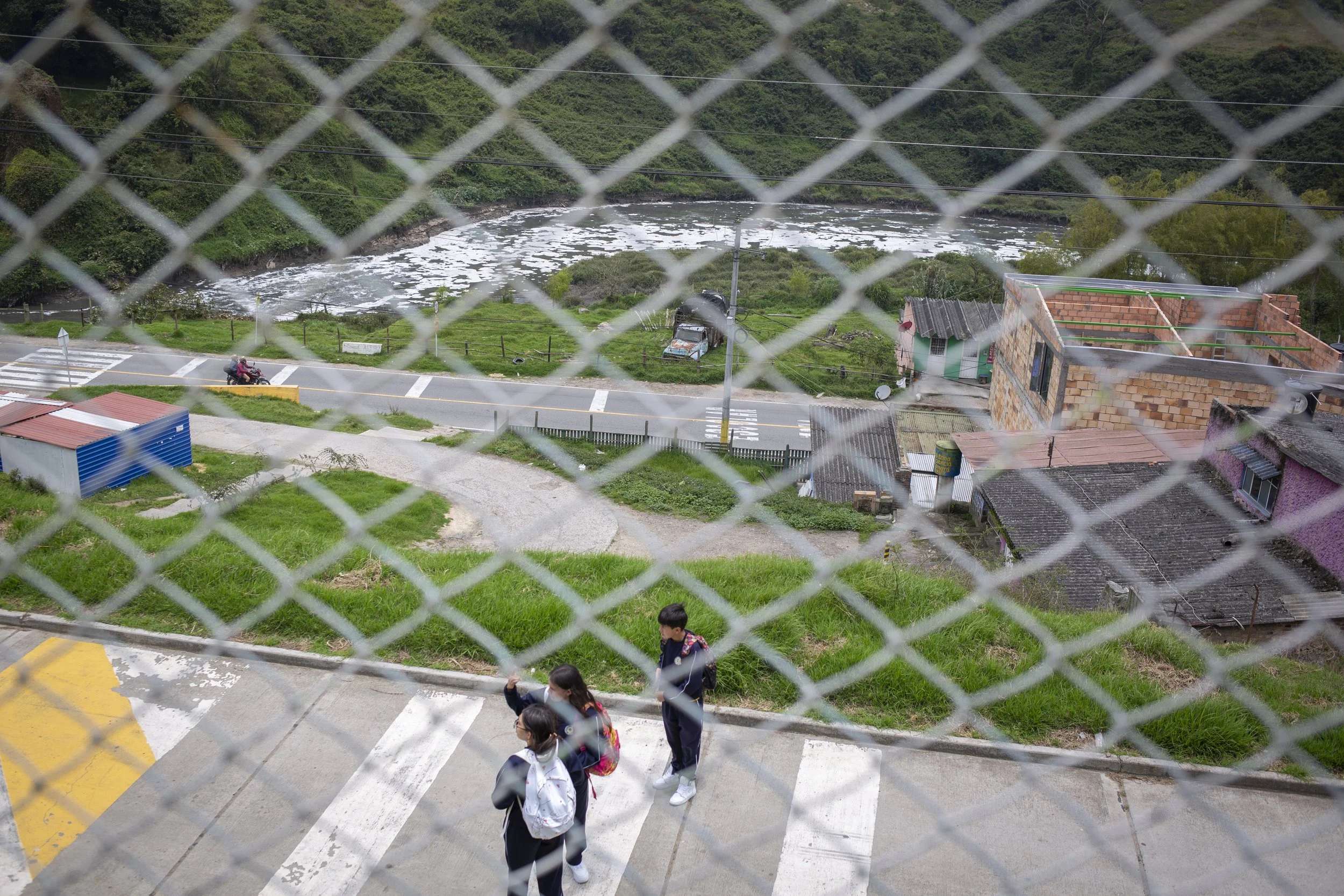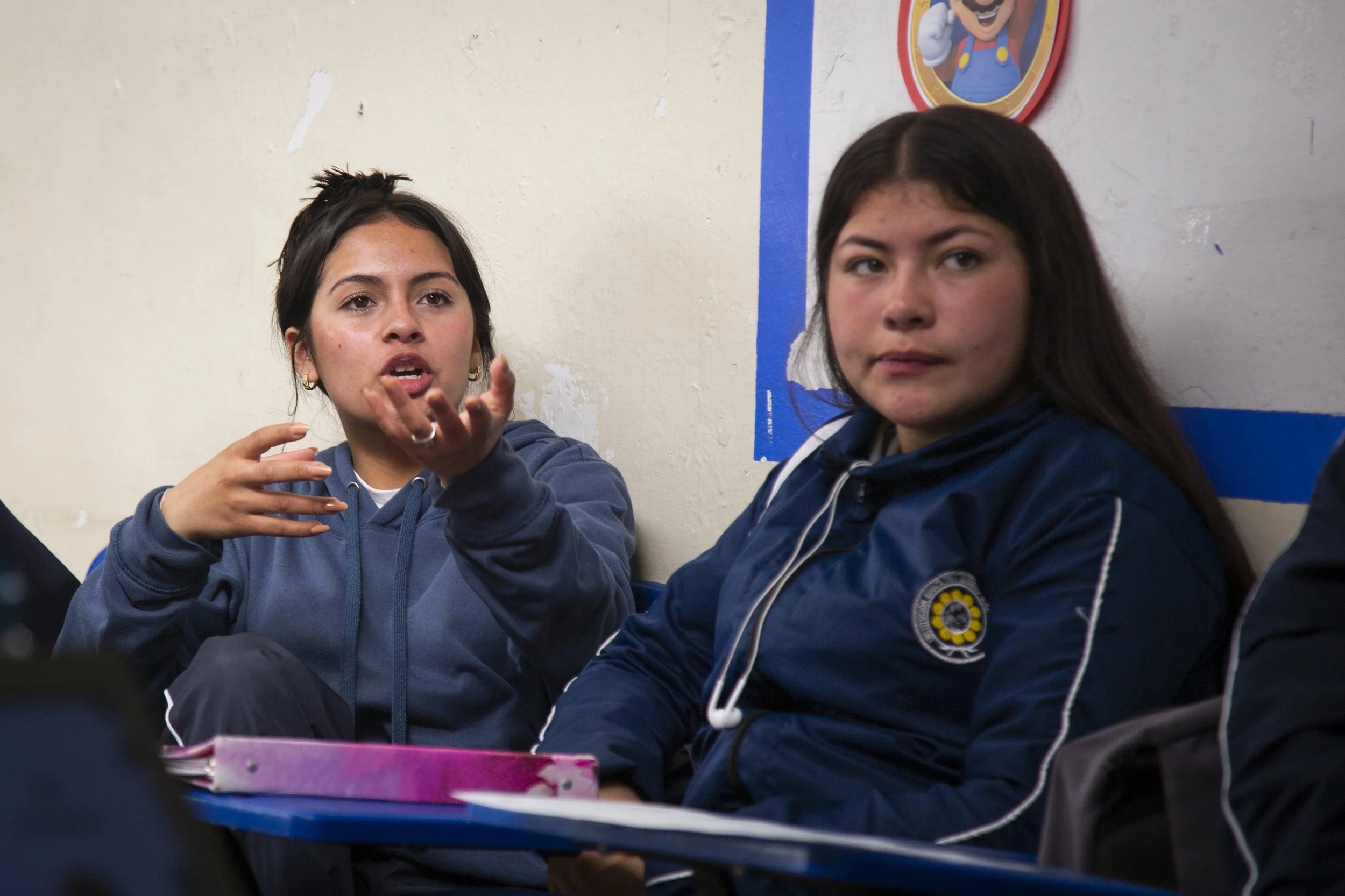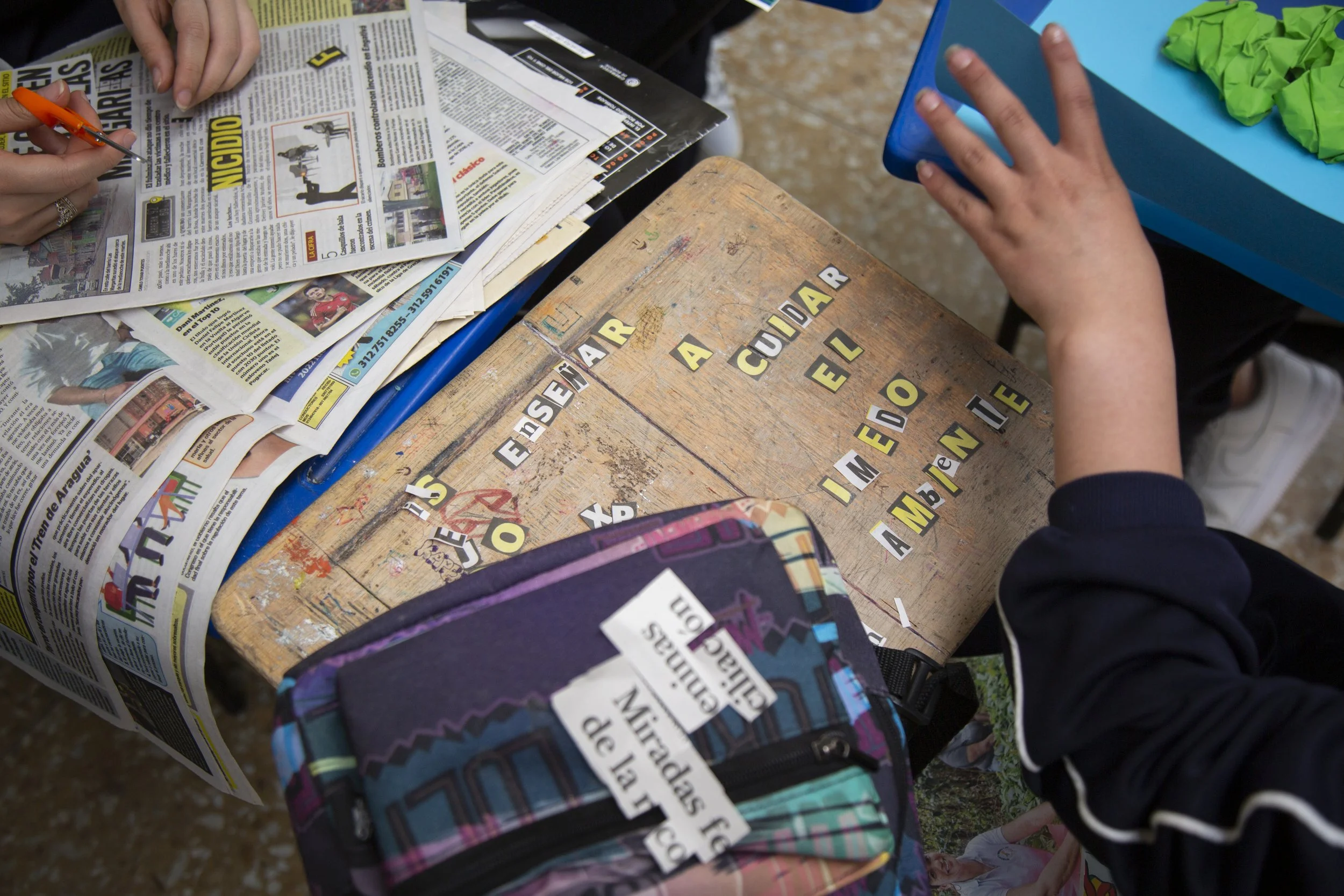A day with the junior reporters of Soacha
Originally published March 28, 2023 by El Cuarto Mosquetero
SOACHA, CUNDINAMARCA—After taking the Transmilenio bus to the end of the line and squeezing ourselves as best we could into yet another bus, the passengers slowly filtering out as we pass warehouse and factories and a hydroelectric plant, we climb the crumbling stairs to the Charquito campus of Eugenio Diaz Castro Educational Institute (IEEDC), where we’re greeted by smiling security guard, a drowsy dog and the sulphuric smell of the Bogotá river.
Although only 30% of Soacha’s area is urban, IEEDC is the only Grade school serving the municipality’s rural population. It’s made up of 10 campuses, of which this one, located in the village of Charquito, is the largest.
The presenters, Karen Tapias and Alejandra Rodriguez, and I arrive with a powerpoint presentation and a bag of tattered magazines for the day’s activity as part of the Reporteritxs community reporting workshop that El Cuarto Mosquetero (ECM) started at this school in 2022. The day’s plan is to talk about forms of pollution and craft a collage on the subject using recycled materials.
While Alejandra guides an icebreaker activity, Karen and I struggle to turn on the projector. When it finally illuminates the pockmarked whiteboard–a victory that turns out to be fleeting–we take our seats in a circle around the room and the class reviews some concepts from the last session: What are some sources of the armed conflict? What does it mean to feel safe?
Alejandra steers the groups into discussion about environmental damages–what are some examples?
“Trash!” rings out from one corner of the classroom. “The river!” from the other.
Back in the day, the Bogota river with its crystalline waters was a weekend destination for day trippers from the city, but today the waterway that skirts the village is more renowned for its contamination: industrial waste and sewage cloud its surface with a dense and stinking foam.
“Have you gone up to Monserrate?” asks Alejandra. Everyone had.
“Have you seen the thin gray layer that looks like clouds? That’s smog.”
Alejandra and the students continue exchanging examples of the pollution from their daily lives, getting deeper into the causes and effects.
“And what can we do, as high school students?” prompts Alejandra.
A tentative voice breaks the silence: “It’s already pretty advanced. I feel like we can't do much to reduce it.”
Heads nod and another student adds that even buying clothes and using cell phones implicates them in systems that cause harm to the environment.
“Nothing, then. Because we’re such small people, right?” Alejandra prods. “But the invitation today–and throughout this course–is that we are going to think of ourselves as agents of change, ok?
This is one of ECM’s objectives: to empower young people to confront issues in their communities as community reporters, training them in photography, radio, writing and audiovisual production with a focus on environmental justice, gender equality and peace-building. These training processes have been carried out since 2015, in the departments of Meta, Guaviare, Santander and Cundinamarca, thanks to the support of entities such as Fondo Lunaria or Propaz II.
The conversation turns to planting trees, but the class is not convinced.
“I mean, they’re just going to cut them down again,” says the cynic.
Alejandra pushes back: “I planted a tree when I was in school and I’m pretty sure it’s still alive!” Gestures of approval from the opposition.
Throughout the presentation on the types of air, soil and water pollution, the conversation remains lively and constructive. We are discussing the role of mining in the armed conflict when we are interrupted by a call to the courtyard for a flag-raising ceremony–the first to be held in person since the pandemic that began three years ago–in honor of International Water Day.
As we wait for the students to trickle out, a teacher who’d been sitting in reflects on the conversation: “They’re so sharp.”
The students fidget in their ranks as they sing the anthems of Colombia and Soacha, invoking a sharp reprimand from the school’s coordinator. The principal takes a different approach to the lesson in civic pride.
“We’re from the countryside, right?”
A bright chorus of yeses rings out.
“Well ok then.”
The program continues with a dance recital: “electric rock accompanied on broomsticks” in which the ninth grade class clacks out a choreography to “sweet child of mine.”
Back in the classroom, the mood is livelier as we start the activity, and the conversation turns to gossip as the students pass around the magazines.
“You should have seen the last flag-raising,” says the cynic in a conspiratorial tone that implies that the broomsticks did not impress her. And had I noticed that the school is falling apart? Did I see the crack in the outside wall?
I had; the ragged line peaked out between geraniums planted in recycled bottles and tires. In fact, a quick tour of the campus, wafting with fumes from the river, was enough to make clear that neither of the day's topics, environmental damages and repurposing old materials, were foreign to these students. But the goal of Reporteritxs is not to teach them about their world, rather to give them the tools to communicate that knowledge and mobilize it to find solutions.





